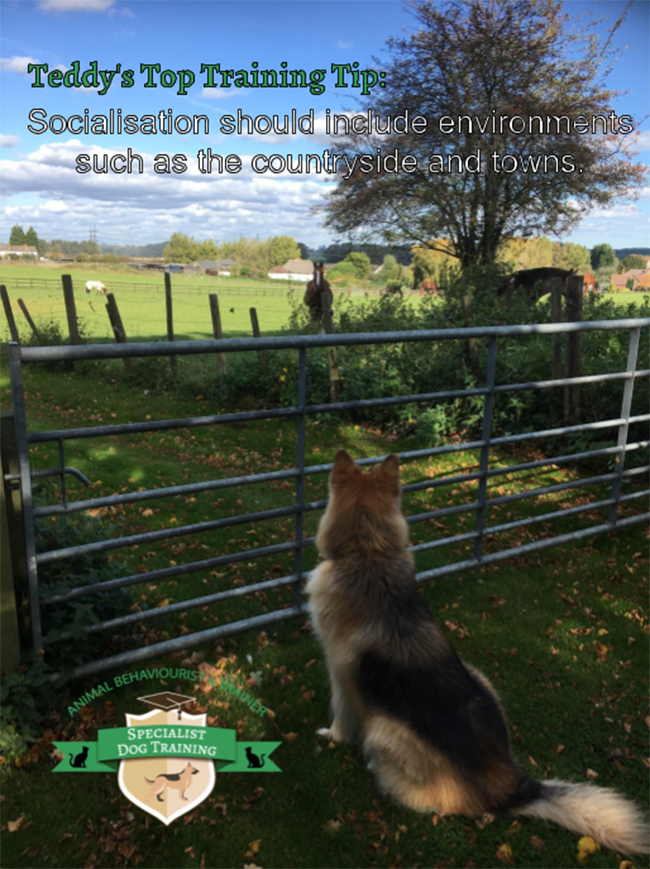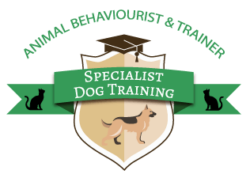
Teddy’s Top Training Tip: Socialisation should include environments such as the countryside and towns.
Bonus Biscuit:
Socialisation should include environments such as the countryside and towns
When we think of socialisation, most owners only relate this to other dogs. However, socialisation is more than just other dogs it is an important part of their development and life skills for the future.
Here we look at teaching dogs to be calm around horses, livestock and traffic. These can be scary events for your dog, so it is important that dogs are under control. When walking in the countryside there are there is one main component to your training:
- A strong and reliable recall!
Remember just because your dog is friendly you should not allow your dog to approach horse/rider or fence run around livestock. It is dangerous.
When you see a horse/rider approaching, call your dog back in plenty of time so that you can clip the lead back on and have them sit/stay (or wait) beside you while the horse/rider passes. Added to the recall above, another component to training is:
- A safe and controlled sit/stay or sit/wait.
If a horse/rider are approaching you too quickly, make yourself visible (remember in a calm way, horses too can get spooked) so that they too can slow down before passing you and your dog. Rewarding your dog for calm behaviour while the horse/rider passes will also help your dog associate that staying still around horses is a good thing.
Once the horse/rider have passed then keep your dog on lead for a little while to help keep the walk calm and relaxed.
Livestock are probably only encountered if you live rurally or holiday in the countryside (camping/holiday homes/etc). When you take your dog for a walk and you can see livestock in a neighbouring field, call your dog back (if he or she is off lead) or have your dog under control.
Do not allow your dog to run up and down the fence barking at the livestock, this will scare them and can cause a whole lot of different problems, i.e. sheep worrying. If you have to walk through a field of livestock, then make sure your dog is under control and walking on a loose lead.
Look out livestock signs too as this will give you time to get your dog on lead. Another component to your training would be:
- Walking your dog on a loose lead.
City or town dogs are often used to traffic sounds (cars/motorbikes/lorries/etc), but it still can be a scary place for some dogs. Visiting local towns with your dog can be fraught with not only dealing with traffic, but also people of different cultures, ages and mobility.
Teaching your dog to walk beside you on a loose lead calmly and giving you and your dog lots of space (this may mean walking your dog furthest away from the curb).
Make sure that you keep an on your dog in these different situations and always reward the calm and relaxed behaviour.
If you do have an issue with your dog when talking passed horses/livestock/traffic then contact a recognised and qualified behaviourist. One from The Animal Behaviour and Training Council.
